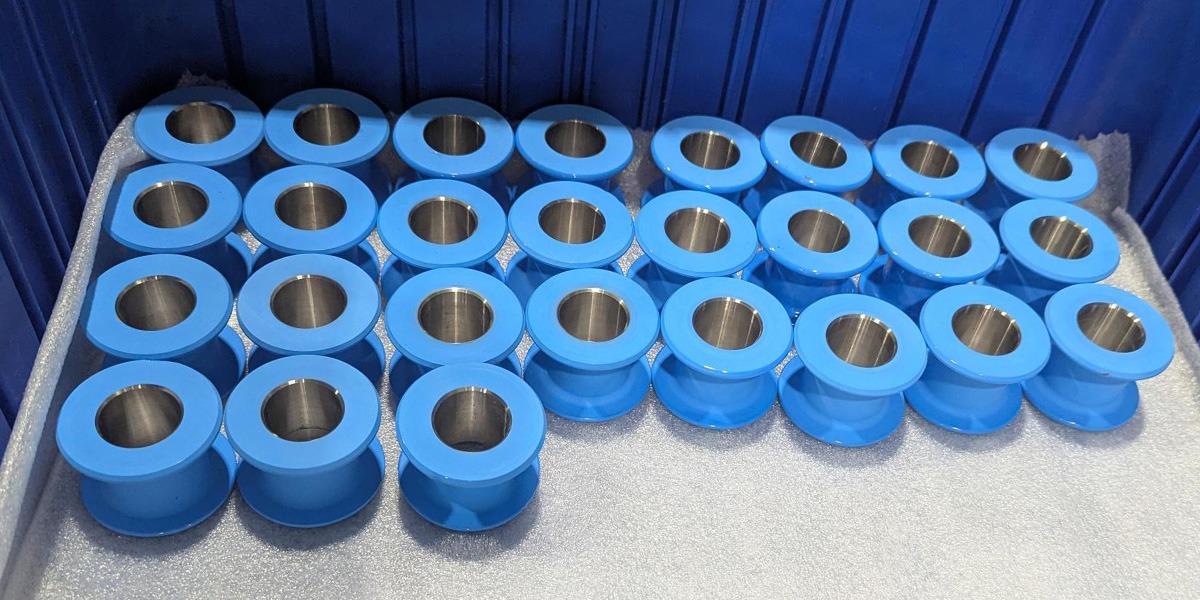When a manufacturer commits to aerospace work, they also commit to perfection. The parts and assemblies used in this industry are often life-critical, so there is no margin for error. A single part out of tolerance can lead to unacceptable outcomes.
So, for manufacturing engineers, this reality presents a constant challenge: how to secure suppliers who maintain the commitment to the aerospace quality control best practices needed to prevent project delays and ensure safety.
Achieving this demands a systematic approach to every aspect of the manufacturing process. A strong Quality Management System (QMS) and adherence to industry-specific best practices are essential for success.
What does a commitment to quality look like for aerospace manufacturers? We talked with Dan Garing, Bertrand Products’ Quality Manager, to hear his thoughts and insights.

Top 5 Best Practices for Aerospace Quality Control
The most effective quality programs share a common set of principles. These five best practices serve as the foundation for any firm working with precision aerospace components.
1. A Zero-Defect Culture and Human Factors
A “zero-defect” mindset must exist throughout the entire organization, from the shop floor to senior leadership. This culture makes prevention a priority. It acknowledges that people, not just machines, are a major factor in manufacturing outcomes. An organization that values its people through proper training and support is more likely to avoid errors before they happen.
At Bertrand, this commitment to quality starts at the top and felt through the whole organization, and it is reflected in our organizational chart. The quality department is independent of production, so Dan reports solely to President BJ Bonin. This arrangement prevents conflicts and ensures quality standards are never compromised.
2. Comprehensive Traceability and Documentation
“Everything in aerospace has to have traceability, and that’s all done through the Quality Department,” Garing says.
Every piece of raw material must be documented, and its journey from the mill to the finished product must be recorded. This documentation is crucial for addressing non-conformances and is a core component of any regulatory audit.
He continues, “From the raw materials we purchase from the mill all the way to the final product.”
For example, because Bertrand is a parts supplier for Bell, who make the V-280 Valor helicopter (the successor to the Black Hawk) for the U.S. Military, there are countries we cannot purchase material from.
“We have built-in inspection operations throughout manufacturing,” Dan says, “Some are required, or based on customer requirements. But there are others we perform because we deem them necessary.”
3. Risk Management and Prevention
Leading manufacturers identify and mitigate potential risks rather than reacting to problems after they occur.
Tools like Failure Mode and Effects Analysis (FMEA) pinpoint weak points in a process and fix them before they impact production. This method saves resources and improves reliability.
At Bertrand Products, an average part is inspected four to five times from start to finish but some complex parts are subject to as many as thirty quality checks before they go out the door.
4. Data-Driven Continuous Improvement
Quality control systems should leverage data from every stage of production. By analyzing information from inspections, tests, and other processes, manufacturers can make educated decisions and improve their methods over time.
A data-centric approach helps discover the root causes of issues and find opportunities to enhance processes.

5. Rigorous Supplier Quality Management
A supplier is a partner, not just a vendor. From sourcing materials to vetting distributors, a rigorous quality program ensures every link in the supply chain is strong.
This includes using approved material mills and vetting distributors to make sure they are getting their material from an approved source. This level of control guards against inconsistencies and unreliable parts.
The Importance of Certification: The AS9100D Standard
The AS9100D standard is the international quality management system standard for the aviation, space, and defense industries. It is more than just a certification; it is a framework that establishes and maintains the highest standards of safety, quality, and reliability. This certification tells customers that a manufacturer has processes in place to meet the industry’s strict demands.
As an AS-certified shop, Bertrand strives to maintain high quality ratings. At the time of this writing, our quality score is in the high 90s, but because quality is a mindset, we are always seeking improvement.
The Core: Bertrand Products’ QMS in Practice
Quality is not something that can be added to a part. It’s either there or it isn’t.
Dan compares the QMS to a teacher grading a paper. The work is already done, so now the job is to evaluate the work and confirm its accuracy.
This verification philosophy is applied throughout Bertrand’s process. If a part does not conform, it is pulled from the job and assessed to see if it can be repaired or if it needs to be scrapped.
Using a suite of tools including industry-standard coordinate measuring machines (CMM), micrometers, complemented by load test equipment and torsion testers, Bertrand’s tight tolerancing is accurate to 0.0001”. In other words, if you pulled a hair out of your head and sliced it 30 times widthwise, you would see the type of tolerance we work within.
Partnering for a Safer Future
Adhering to these best practices builds confidence and trust. A strong QMS is the key to reducing risks, improving efficiency, and delivering high-quality, life-critical components. It is so much more than simply meeting a standard. It’s about protecting the lives that depend on the final product.
Are you ready to work with a partner who lives and breathes these standards? Let’s talk about how Bertrand Products can support your next project.














